
Two weeks into the Russian invasion, as millions of Ukrainians fled their homes and headed west, artist George Butler began his own journey in the opposite direction. Travelling light, his dip pens, watercolours, Indian ink and drawing board stashed in his customary shoulder bag, he took a flight from London to the city of Iasi in Romania, then jumped on a bus to Chișinău, the Moldovan capital. Another long and very crowded bus journey took him to Odesa in southern Ukraine, where he stayed for a few days before continuing on an overnight train to Kyiv, at the heart of the conflict.
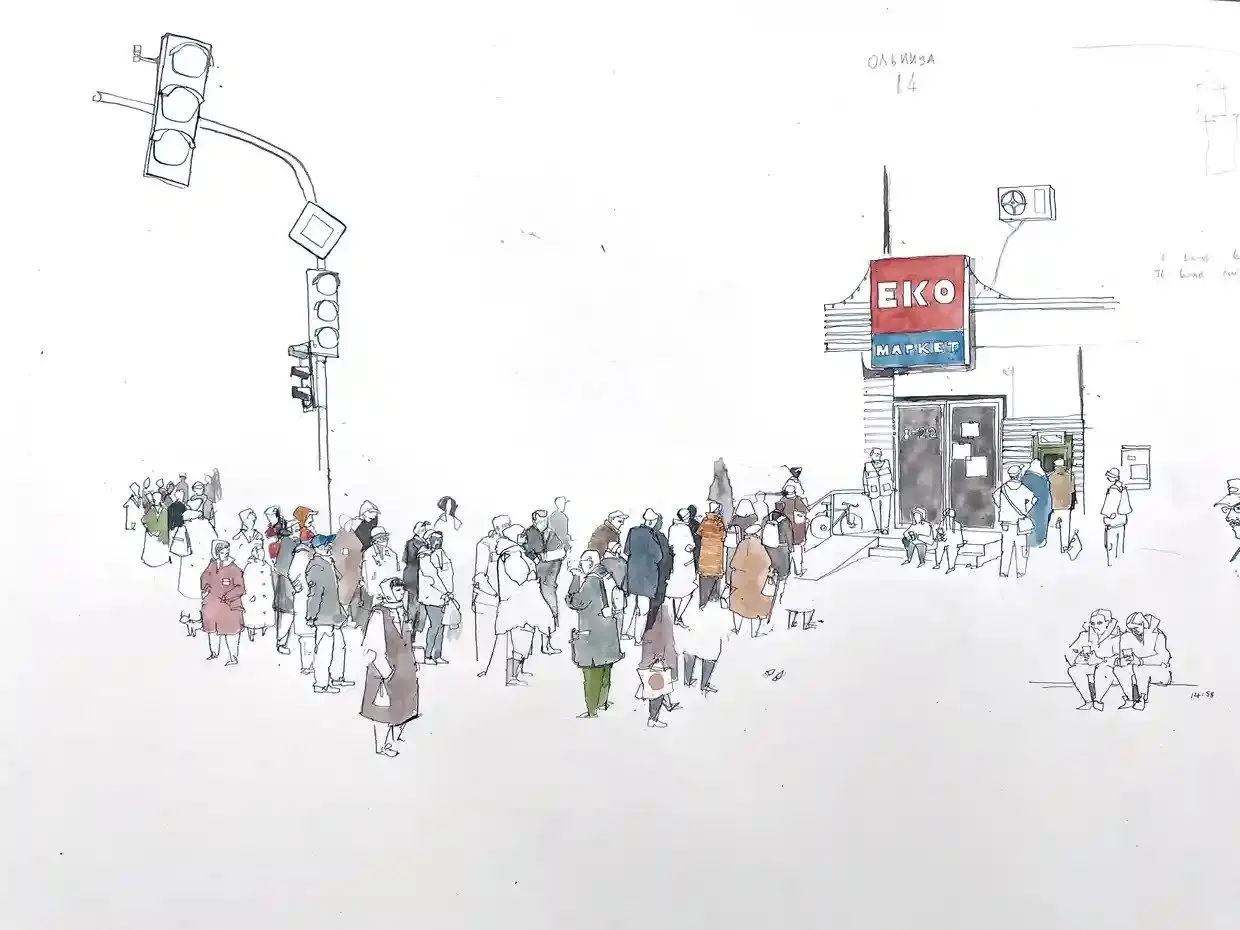
Talking to him via Signal while he is under curfew in the apartment that has been lent to him by a Kyiv resident, my first question is: why? What made him undertake such a perilous journey into a living nightmare that others are desperate to escape?
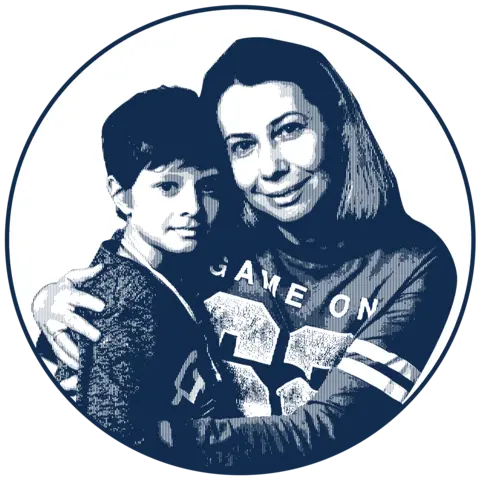
As a nonprofit journalism organization, we depend on your support to fund coverage of global conflicts. Help us continue funding the hard costs of in-depth coverage of the Ukraine invasion—including travel, hostile environment safety training, and the increased security expenses that arise from reporting in war zones.
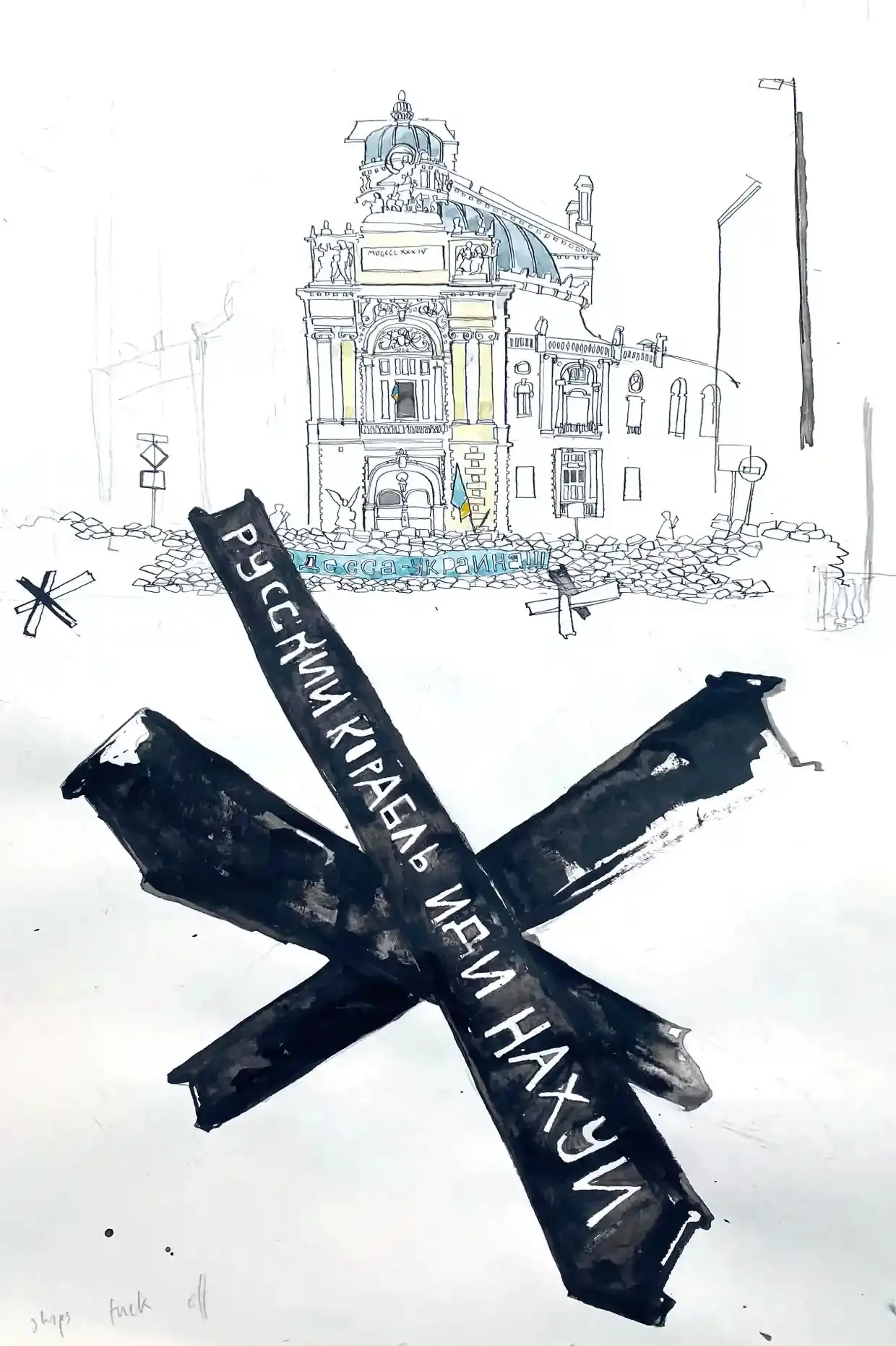
“I guess doing my job is a compulsion,” he says. “I think it’s the same for photojournalists and journalists who cover conflicts. We want to tell stories that otherwise we assume would not be told. That’s always been my intention in Syria, in Afghanistan, in Yemen and all the other places I’ve worked in before.”
Butler has been illustrating what happens in war zones, refugee camps and conflict situations in beautiful, delicate ink and watercolour paintings since he embedded with the British army in Afghanistan at the age of 21. His work has been published in newspapers and magazines all over the world and shown at the Imperial War Museum and the V&A. He dislikes the term ‘“war artist” and prefers to describe himself as a reportage illustrator. “The reality is that I draw what is going on around the margins of war,” he says. “I think there is always space around the edges of these vulnerable, sensitive places to tell longer, slower, quietly observed stories, a visual account of what is going on there. It is not all about tanks and helicopters being blown up — it is about what happens at the fringes of atrocity.”
As Butler waited in Odesa station last week to catch the overnight train to Kyiv, a scene of the kind he is drawn to played out. “The 8pm curfew had begun and it felt eerie in the darkness. Then a man called Volodymyr took out his acoustic guitar and started playing some Ukrainian songs and people began singing along. The guard came along and told him to be quiet but everyone said no, let him play. So he played and his friend handed out flowers, pink tulips, to every woman in the crowd. It was this extraordinary moment.”
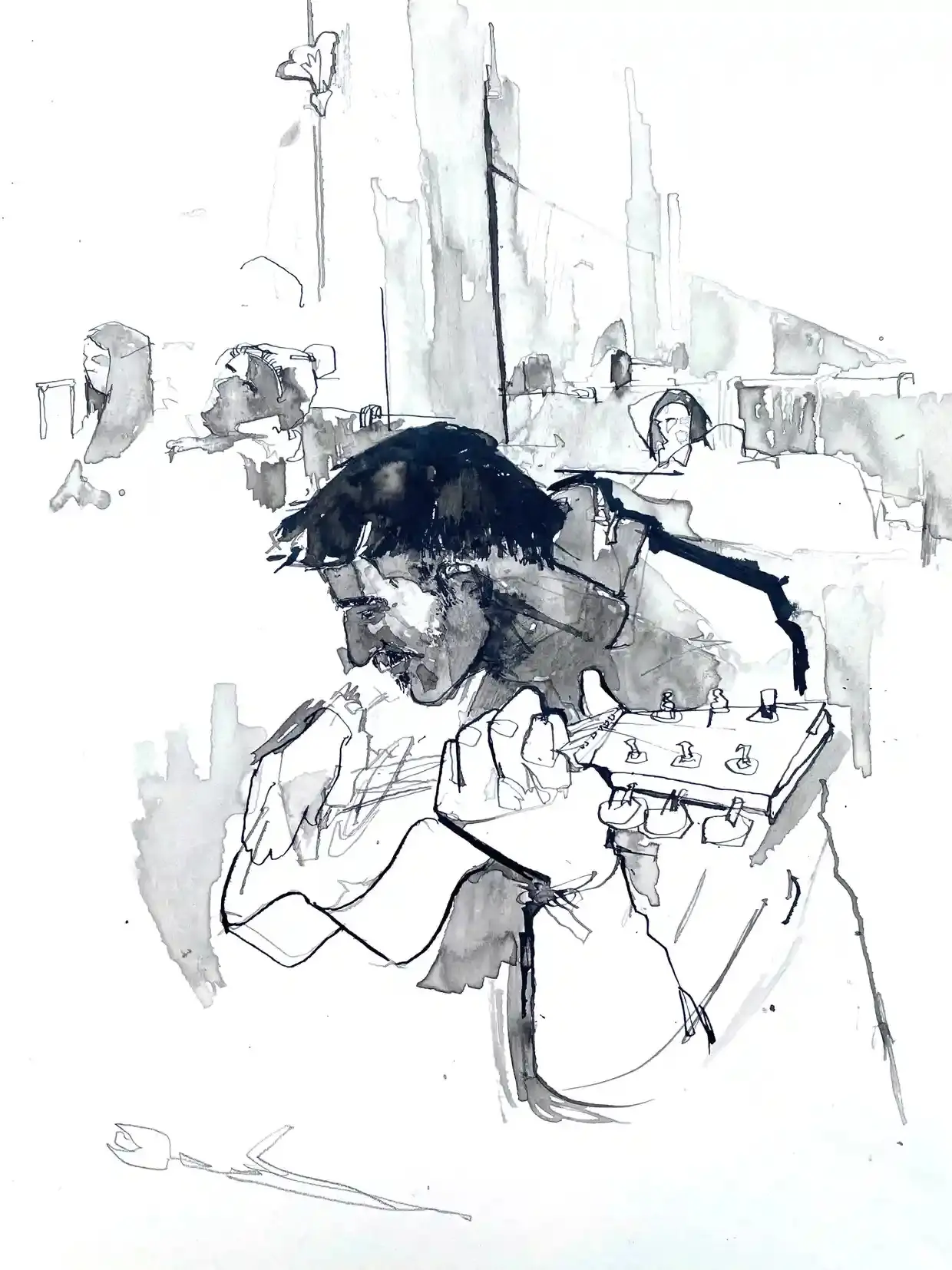
While Butler has the utmost respect for photographers, he believes that an illustration of the effects of war drawn over a couple of hours offers a different perspective. “It’s not the snap of a shutter and then walking away. You can’t ‘steal’ a drawing. Everything has to be done with the permission of the people in the image. It’s gentle and open. It’s unthreatening.”
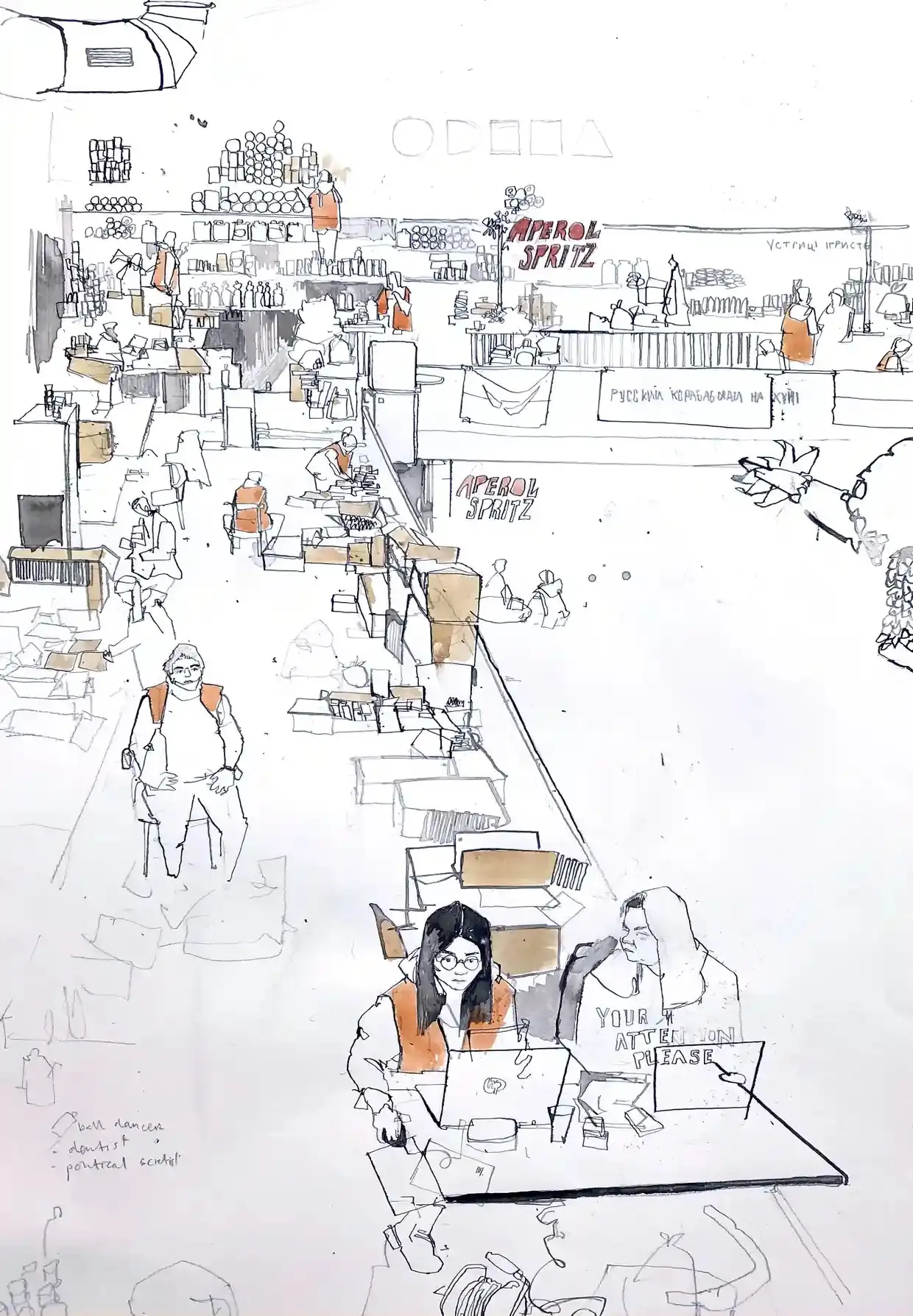
Yesterday, in Kyiv, where you can hear thuds of artillery in the background all day, Butler went out with two volunteers, one a human rights lawyer and the other a mother, who were delivering aid to anyone who couldn’t leave their homes. “We visited a woman called Madame Olga. She was 99 and she was terrified of anybody coming into her house because she thought they would be coming to take her away. She wanted to stay in her home, whatever the situation. As I drew her, she told me she was too frail to move down into the bomb shelter when there was an air raid so she and her daughter just stayed in the flat and hoped that any bombs would miss. That is the civilian cost of what is going on. Madame Olga is not at war, but war is very much part of her life.
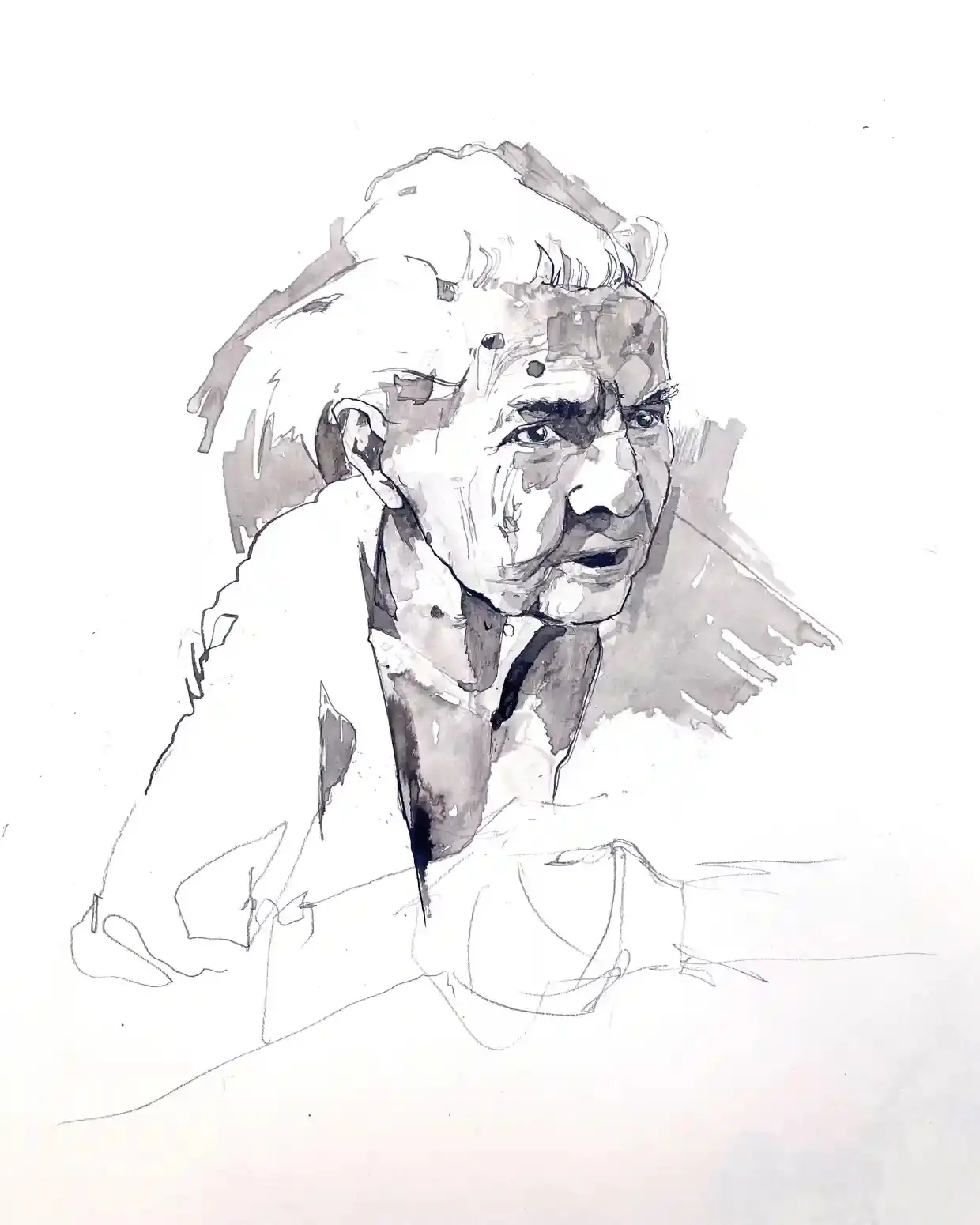
“She’s 100 in August and she invited us to her birthday. She lived through the Great Famine — the Holodomor — and the Second World War and now she is going through this. She told me she is so worried that she forgets the words to describe how she feels. The anxiety is so great she can’t explain it. It was very moving and I think that is an example of a drawing being a gentle way into sitting with someone and listening to what they’re saying. That’s not to say it can’t be done with a camera, but I hope that drawings offer a different dimension.”











